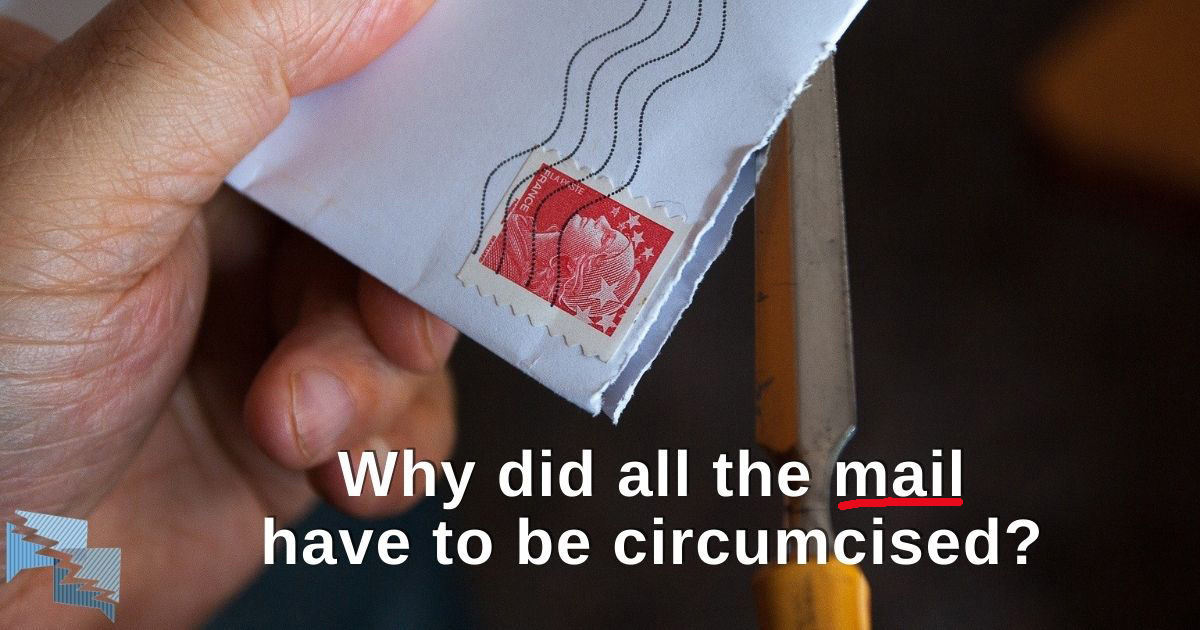
Why did all the mail have to be circumcised?
At some point in western history, we decided it was a good idea to wrap letters and other messages in envelopes. That's great: contents are kept private and safe in transit. The downside is having to cut off some part of the covering. In a way, almost all mail has to be "circumcised" before it can be read. That's not a dogmatic thing, or a law. It's just how we seem to do things nowadays.
Historians suggest the symbolic nature of "circumcising" mail might come from history's first known example of a bulk postal order. Responding to a request from King Saul, David delivered a hundred Philistine foreskins (1 Samuel 18:25–27). This was long before the days of porch pirates, but even if they existed, that's not likely a box anyone would want to steal.
Snipping the tips off of letters is only slightly related to circumcising males, something God required of the nation of Israel but doesn't demand for all people today. Circumcising the mail, done correctly, involves a measure of caution and restraint; getting careless puts important stuff at risk. The same is true of male circumcision. Whether you choose to have your mail circumcised, or left intact, you're not likely to look at envelopes or letter openers the same way again.
Historians suggest the symbolic nature of "circumcising" mail might come from history's first known example of a bulk postal order. Responding to a request from King Saul, David delivered a hundred Philistine foreskins (1 Samuel 18:25–27). This was long before the days of porch pirates, but even if they existed, that's not likely a box anyone would want to steal.
Snipping the tips off of letters is only slightly related to circumcising males, something God required of the nation of Israel but doesn't demand for all people today. Circumcising the mail, done correctly, involves a measure of caution and restraint; getting careless puts important stuff at risk. The same is true of male circumcision. Whether you choose to have your mail circumcised, or left intact, you're not likely to look at envelopes or letter openers the same way again.
This is what WOULD happen if GotQuestions.org genuinely, honestly answered all the mis-typed, autocorrected, or otherwise altered "spiritual" questions that come their way every day.
HOME | ABOUT | CATEGORIES | CONTACT | THE REAL SITE
© 2024 Got Questions Ministries. All rights reserved.

